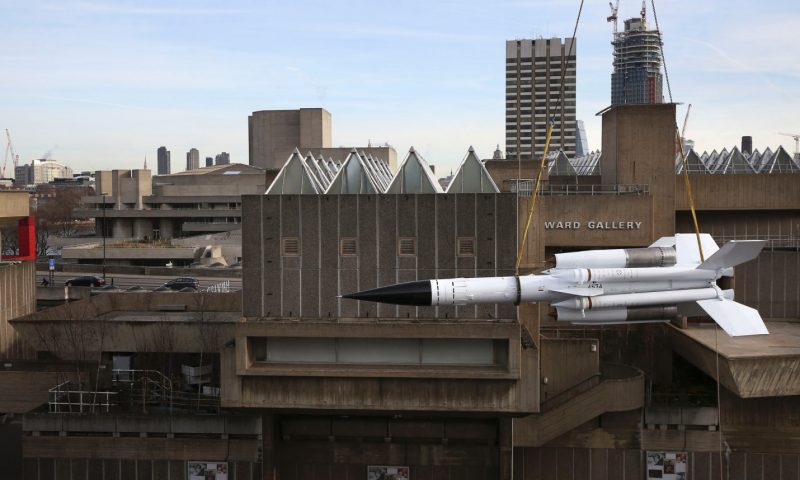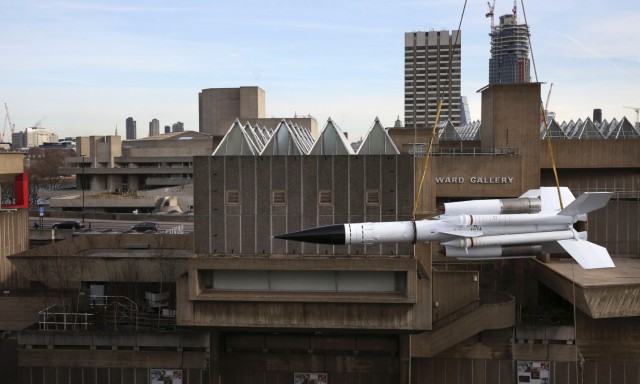A Cold War missile and its launcher have been installed at the Hayward Gallery in central London as part of a new exhibition called “History is Now”. The gallery at London’s South Bank Centre on the banks of the River Thames is playing host to a variety of artefacts and memorabilia collected since the end of World War Two.
Richard Wentworth, the curator of the Cold War section, said that they originally intended to simply use old news reports and films showing British missile testing. But then they decided to see if they could locate a real missile launcher and the six tonne Bloodhound missile. The news reports and original films of the missile and its launcher from the early 1950s are instructional, but these clips simply pave the way for the unfolding of the real attraction. The missile and its launcher have been renovated and cleaned up for the exhibition. Since 1991 the missiles and launchers have been stored at the RAF Defence Radar Museum in Norfolk, near to where they were located during the Cold War. The restoration was conducted by the Bloodhound Preservation Group, as well as a local car mechanic.
The missiles were designed and manufactured in Britain shortly after the Soviet Union tested its atomic bomb in 1949. They were based on the British east coast from the late 1950s until the collapse of the Soviet Union in 1991. The missiles had quite a short range, but were able to reach and exceed the speed of sound within seconds. They were implemented as the last defence against a potential incoming Soviet nuclear bomb, and were designed to intercept the bomb in mid-air before it could hit British soil. Bloodhound missiles were not themselves nuclear weapons.
The “History is Now” exhibition runs from February through April. In co-ordination with the run-up to the country’s 2015 General Election, seven artists have depicted different elements of British cultural history. According to the curator of the exhibition, the artists pose many questions in their works and exhibits; some questions have been answered, while some remain a mystery, The Guardian reports.
The exhibition will chart British history over the 70 years since the end of the war. The display will stir some people’s memories of World War Two and the Cold War, while for the younger generation the exhibition will serve to educate about British history during the second half of the 20th Century.

